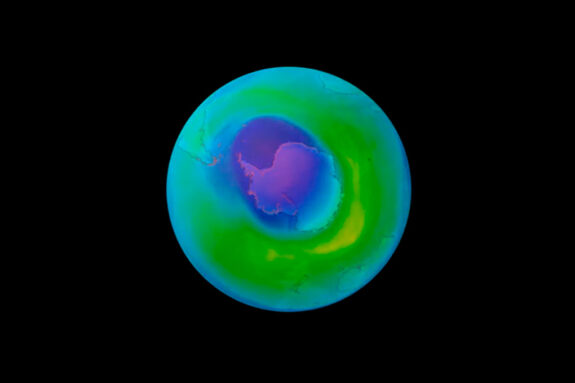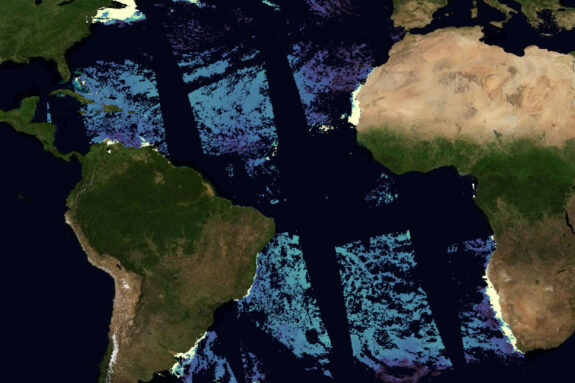A long-lasting, strong magnetic field took our system from a disk to one with a sun and planets.
Long before our solar system evolved to form a sun and planets that we have today, a large cloud of gas and dust resided in its place. About 4.6 billion years ago, it collapsed into a flat, swirling protoplanetary disk called the solar nebula. In the millions of years ensuing, the solar system took its shape, such that today more than 99% of the matter is in our sun and while more than 99% of the angular momentum resides in its encircling planets.
A question that researchers have, though, is how does this happen? Scientists have found that protoplanetary disks are an extremely important step in the formation of solar systems because they efficiently create stars and planets in just a few million years. However, the physics governing the evolution of the solar nebula and big shift in mass and angular momentum transfer among the solar system’s matter, and that of other young solar systems, has yet to be worked out. But now researchers from MIT and elsewhere are one step closer to putting the whole picture together.
“The long-standing problem in how you form planets and the sun was how you go from the a two-dimensional, disk structure — which forms after the collapse of a molecular, roughly spherical cloud of gas and dust — to the configuration we see in our own solar system and other solar systems, where there’s a big massive, central star surrounded by relatively rapidly moving dust grains,” says Benjamin Weiss, professor of planetary sciences in the MIT Department of Earth, Atmospheric and Planetary Sciences (EAPS). “That’s not easy to do.” In the absence of forces other than gravity, Weiss says, the gas and dust should just keep orbiting the protostar, and not fall in to make a much larger sun and the planets.
One way this could happen, theoretically, is by way of a strong magnetic field generated by currents carried by ionized particles in solar nebula. Researchers have theorized about this mechanism for decades, putting forth many iterations of numerical models for how the physics could occur. Furthermore, earlier work from Weiss has found that an intense magnetic field was present in the early solar system and that the solar nebula likely lasted about 3 to 4 million years. However, there has been limited experimental evidence for this until now.
In a new Science Advances Review paper, Weiss and his colleagues Xue-Ning Bai from Tsinghua University and Roger Fu of Harvard University examined the plausibility of protoplanetary disk magnetic fields to form solar systems, particularly ours, from a holistic perspective. They did so from a physics standpoint — looking at hydrodynamics and magnetic interactions of the solar nebula. In addition, they investigated the lifetime and magnetic strength of the solar nebula using measurements of the magnetic field from pristine, ancient meteorites, dating back to the first 10 million years of solar system.
The researchers found that the evidence and theory agreed well. An ancient magnetic field did exist, which is roughly the strength of Earth’s today, about 0.5 Gauss (i.e. 10s of microtesla) – about 10,000 times that of interplanetary space today. This is consistent with theory about how strong it would need to be to drive accretion of our star at the rate that’s observed in planetary systems by astronomical observations, says Weiss. Further, the roughly 4 million year lifetime of the magnetic field and the solar nebula inferred from the meteorite measurements is long enough to explain the formation of large planets.
“For the first time, it tells the whole story from synthesis, in terms of the disparate meteorite measurements,” says Weiss, “and it shows that there’s this consistent picture.”
Evolving a disk, in theory and practice
The team began from the bottom with disk theory—how a protoplanetary disk would evolve if it had a magnetic field. Through a series of calculations and simulations, the scientists contemplated the solar nebula as a churning, charged fluid that conserves angular momentum. As mass moves inward to the sun, the momentum is transferred to the outer parts of the disk. They determined that hydrodynamic processes that lack effects from magnetic fields weren’t sufficient to move the energy and mass needed. But, with a combination of forces exerted by the magnetic field, it could efficiently drive mass transport in both the vertical and radial directions. The planetary scientists then used this understanding to estimate the theoretical strength needed to explain accretion rates that are astronomically observed for young stars like the Sun.
The researchers then assessed the predictions of this theory using experimentally-determined measurements of the strength of the field and lifetime of the protoplanetary disk from meteorites. For this, they selected several pristine, ancient meteorites that had not undergone any substantial chemical or physical alterations since they were formed. Weiss and his colleagues then extracted tiny ferromagnetic grains and measured the magnetization that was encoded in them when they solidified in the early solar system’s field. They also used a series of chemical analyses to estimate where they came from in the solar system and estimated their ages using radiometric dating.
“What’s cool about this is we can use the magnetism as a tracer of how long this disk persisted, and we can see that it lasted about 4 million years in our own solar system,” says Weiss. “That’s the first really precise age of the lifetime of the disk, and it seemed to be consistent with what we see astronomically.”
The Jupiter complex
The lifespan of the solar nebula, Weiss says, has important implications for explaining how large planets like Jupiter form and how their orbits around the sun evolved into their final positions. One model proposes that the Jupiter was built like a star – gas that collapsed under its own gravity; another, the favored hypothesis, suggests that it grew like a large terrestrial planet with a solid core of ice and rock until gas became gravitationally bound to it. The first can occur in less than a thousand years, while the other takes over a million years. Since the disk lasted around 4 million years, it permits this preferred core accretion model, says Weiss.
This work was made possible by major advances in laboratory instrumentation and theory. In the next 5 years, increased laboratory measurements and astronomical observations will hopefully shed light on some remaining questions like, what causes the magnetic field and disk to disappear, and how did the first solids in the solar system form? They also expect to be able to detect and measure fields around other young stars regions to compare to our solar system.
At the moment, we have observed nebular magnetic fields for one disk (our own), but there’s reason to think that this isn’t a rare phenomena. Since these disks can generate magnetic fields that are the right strength for producing a solar system like ours, Weiss says, “it has implications for all disks forming elsewhere in the galaxy and maybe in the universe—that this may be a general process for how solar systems form.”
Story Image: Artist’s illustration of a protoplanetary disk. The chemistry of a protoplanetary disk determines what molecules are incorporated into a newly forming planet’s atmosphere. (Credit: ESO/L. CALÇADA)



